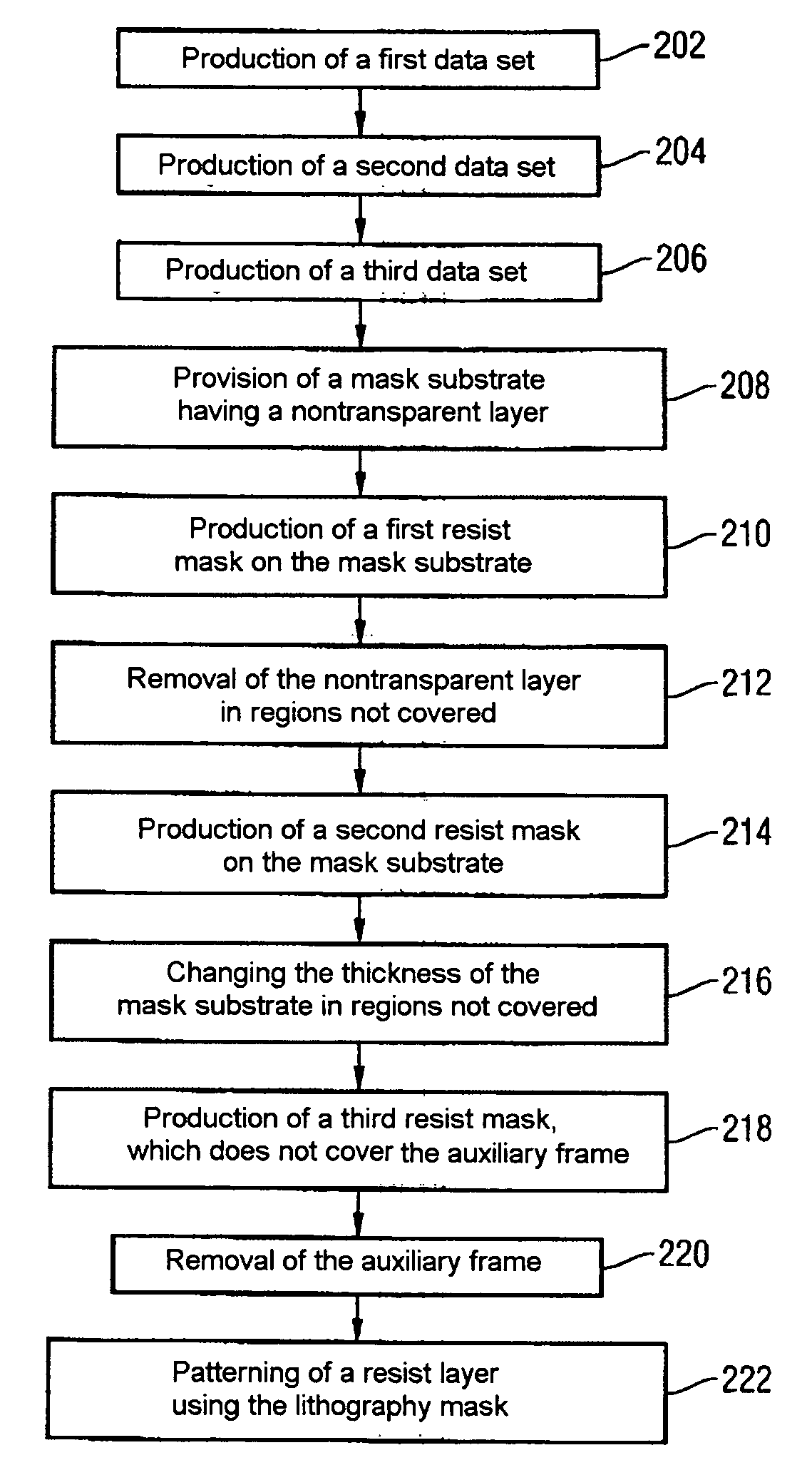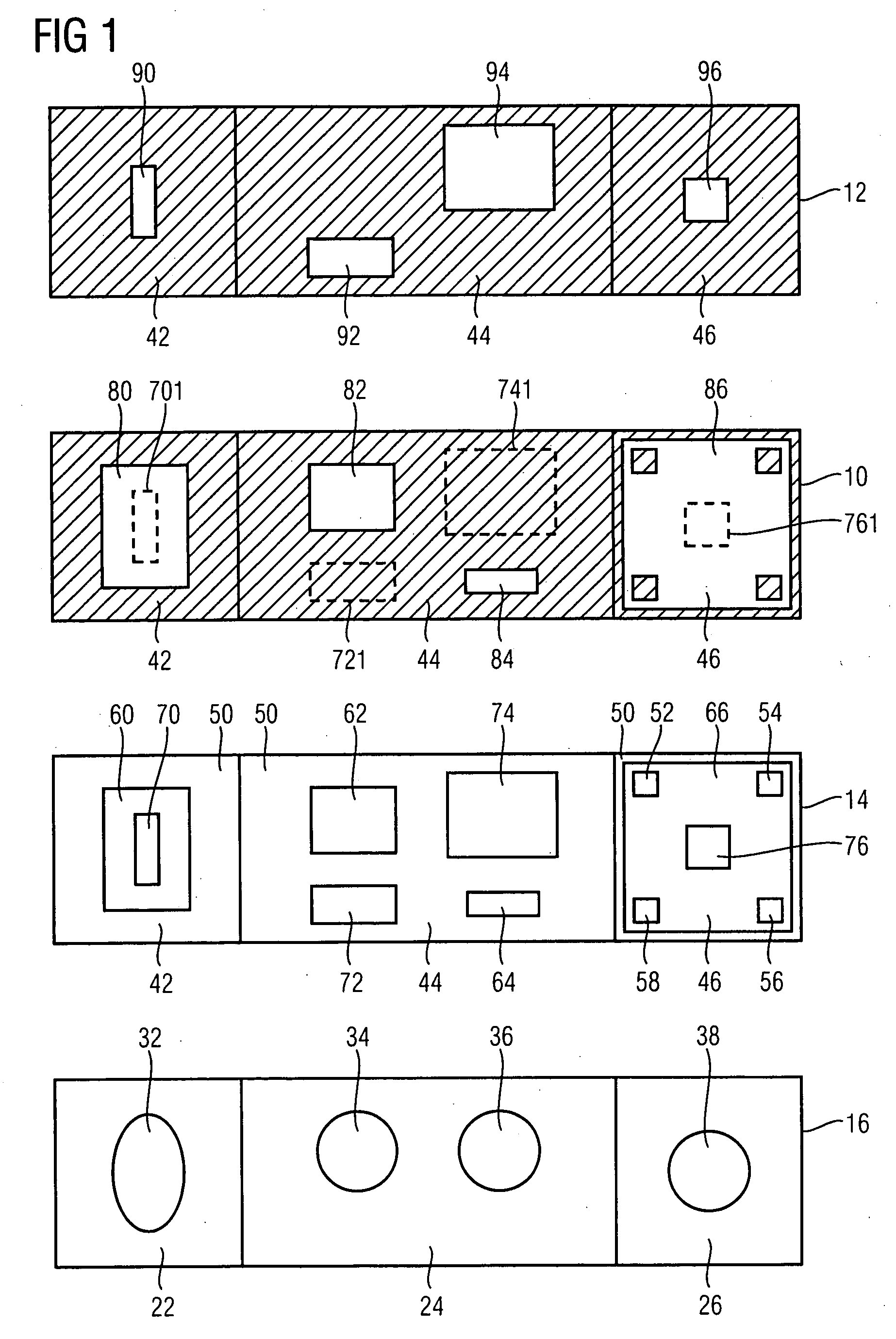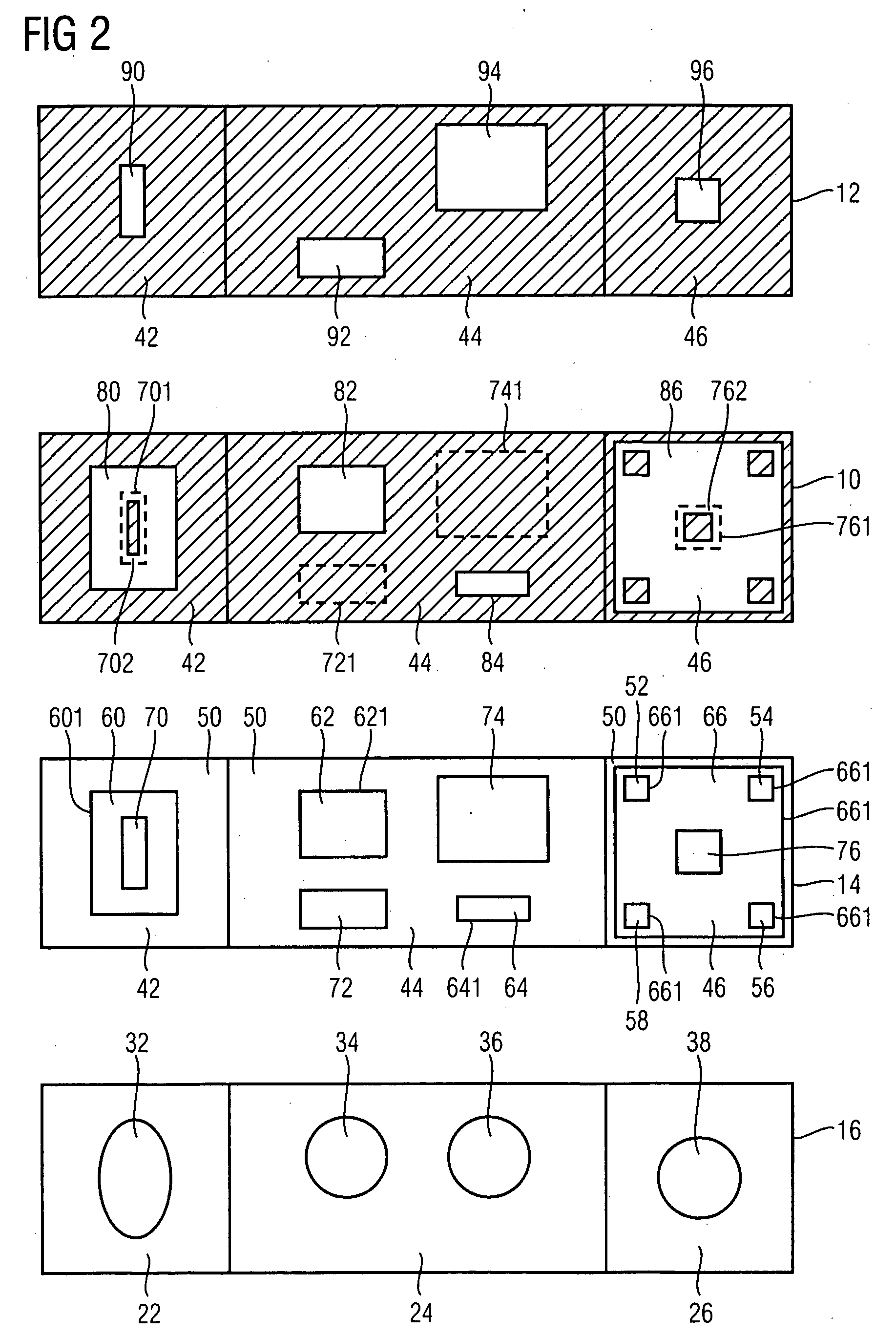Lithography mask and methods for producing a lithography mask
- Summary
- Abstract
- Description
- Claims
- Application Information
AI Technical Summary
Benefits of technology
Problems solved by technology
Method used
Image
Examples
Embodiment Construction
[0024]FIG. 1 is a schematic illustration of a first exemplary embodiment of the present invention. It shows schematic plan views of a first resist mask 10, a second resist mask 12, a finished lithography mask 14 fabricated by means of the resist masks 10, 12, and a substrate 16 patterned lithographically by means of the lithography mask 14. The resist masks 10, 12 are produced during the fabrication of the lithography mask 14 on the mask substrate thereof. Afterward, their lateral structures, as described below, are transferred into or onto the mask substrate in order to obtain the lithography mask 14.
[0025] The patterned substrate 16 has a first section 22, a second section 24 and a third section 26 each having one or a plurality of contact holes or passage holes 32, 34, 36, 38. The passage holes 32, 34, 36, 38 penetrate through the visible topmost layer of the patterned substrate 16 in order, by way of example, to produce electrically conductive connections between wiring planes ...
PUM
 Login to View More
Login to View More Abstract
Description
Claims
Application Information
 Login to View More
Login to View More - R&D
- Intellectual Property
- Life Sciences
- Materials
- Tech Scout
- Unparalleled Data Quality
- Higher Quality Content
- 60% Fewer Hallucinations
Browse by: Latest US Patents, China's latest patents, Technical Efficacy Thesaurus, Application Domain, Technology Topic, Popular Technical Reports.
© 2025 PatSnap. All rights reserved.Legal|Privacy policy|Modern Slavery Act Transparency Statement|Sitemap|About US| Contact US: help@patsnap.com



